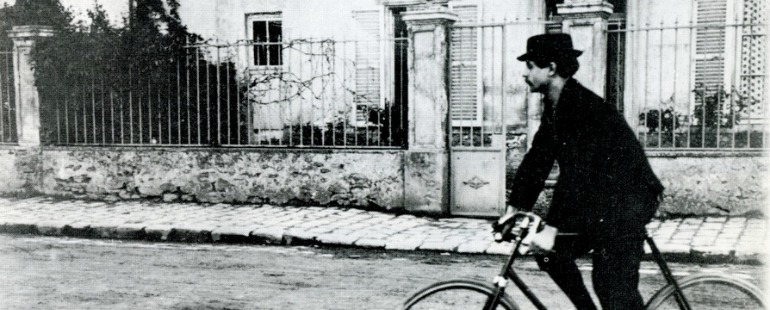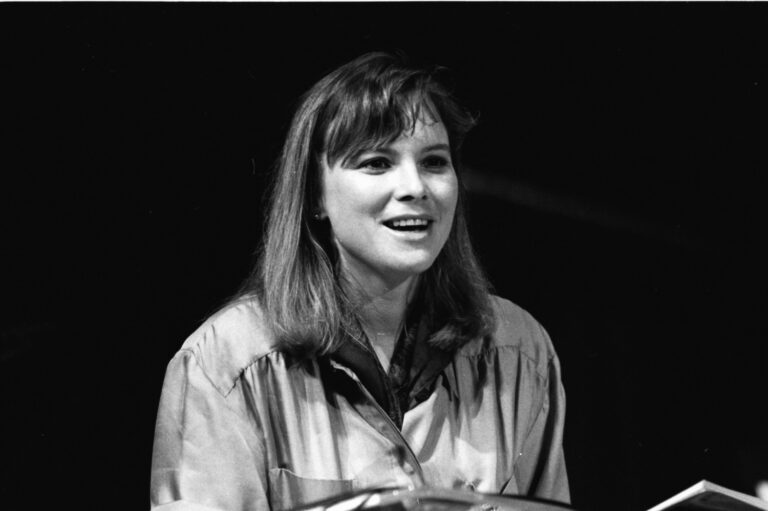René Daumal and the Science of Imaginary Solutions

At the age of 16, soon-to-be writer, editor, and translator René Daumal decided to inhale carbon tetrachloride with a group of other young French poets. Deliberately inhaling carbon tetrachloride or any other solutions meant for cleaning is generally a bad idea, but Daumal did it anyway because he wanted to “see,” to hover between life and death in order to understand both more fully. Daumal was born in 1908, and by the late 1920s, he and the other editors (all startlingly young) of an important literary journal called Le Grand Jeu had distinguished themselves from André Breton and the rest of the Surrealists.
Because of Daumal’s fascination with the beyond, he began a wide, intensive study of Buddhism and Hinduism. He mastered Sanskrit along the way, and went on to translate a number of important Sanskrit texts into French for the first time. More than a few Western modernists have flirted with Eastern philosophy, grossly simplifying or perverting ideas when it served their ideological purposes. Daumal did not belong to that camp. In writing about his experience with carbon tetrachloride, he concluded that his brush with the “otherworldly” was fundamentally indescribable, or more precisely put, unable to be articulated through language.
Daumal’s obsession with “the other side” would continue to be at the center of his writing life. In an essay about ghosts, Daumal writes, “Every memory of death, by inducing man to conceptualize his own absence, leads him into absurdity.” It was this brush with the absurd that led to Daumal’s interest in ‘Pataphysics, a pseudo-philosophy led by Alfred Jarry that in many ways served as a precursor to both the Surrealists and the Dadaists (especially the Dadaists).
Roughly defined, ‘Pataphysics is a “science of imaginary solutions,” but it is more easily understood as a science of the irreducible particular. To understand a universal idea, you must take x (the particular instance of a universal idea) out of its context. Only by “realizing the void [x] leaves behind” can we understand the essence of x, unhindered by the constraints of language. Daumal was interested in the particulars that make up the universals, in things reduced to their most essential forms. As Father Sogol, one of the primary characters in Daumal’s magnum opus Mount Analogue states, “A thing either is or is not, and that’s the end of it.”
Although Daumal literally explained ‘Pataphysics as the opposite of physics, he was attuned to the manic optimism of early 20th-century science and was at home talking about even the most obscure scientific oddities. Daumal was as comfortable writing about science as he was with religion, and was able to stay up to date with contemporary physics because he worked as a proofreader for the Encyclopédie Française’s section on the hard sciences. In his essays he skips from one scientific oddity to the next, speaking for a time about Dr. Robert E. Cornish, a real-life mad scientist who succeeded in resurrecting fox terriers medically declared dead. Cornish insisted on human trials, but for reasons both practical and ideological, he was not allowed to test on human patients. Elsewhere, Daumal writes about the science behind werewolves, and about how to drill a well of knowledge from a public urinal. This sort of internal logic is one of the guiding principles of Mount Analogue, in which Father Sogol (logos backwards) calculates the location of an impossible-to-summit mountain, larger than Everest, that resides on an island invisible to the naked eye. Later in the book, Sogol describes the experiments he has conducted in order to precisely “measure the power of human thought.”
Daumal’s wide repertoire is amusing, and his commitment to ‘Pataphysics occasionally crosses from the absurd to the profound; but Daumal’s earnestness is the reason that his work is still worth reading. Mount Analogue is almost entirely allegorical: it is about how reaching an understanding of the divine, while a wholly impossible task, is still a meaningful venture. Each person’s spiritual path is anything but immutable, and we’re all responsible for helping each other along our own trajectories. In a collection of Daumal’s notes about “mountain climbing,” he writes: “If you come to an impasse or a dangerous spot, remember that the trail you have left could lead people coming after you into trouble. So go back along your trail and obliterate any traces you have left. . . . Be ready to answer to your fellow men for the trail you leave behind you.” It is the responsibility of the spiritually at-ease to help younger generations navigate their own labyrinths, but it also the duty of those who have reached an impasse in their own development to provide warning signs for those further down the mountain.
Daumal died of tuberculosis at 36, not long after he wrote about his experiences with carbon tetrachloride. Because of his early death, Mount Analogue remains unfinished in mid-sentence. He left far fewer traces than he perhaps intended, but the purity of his vision and the lucidity of his writing suggest that he’ll always have a place among the eccentric 20th-century French writers. Mount Analogue tell us very little about how we are to live or how we should go about finding meaning in the face of the absurd, but it does stress the importance of trying to find meaning. It’s difficult not to think of fellow French-language author and absurdist Camus and his famous lines at the end of The Myth of Sisyphus: “The struggle itself towards the heights is enough to fill a man’s heart. . . . One must imagine Sisyphus happy.” For Daumal, the struggle towards our own inner heights, and in helping those along who come after us, are the only struggles that matter. Most of his work, I think, was his own attempt at ensuring both his triumphs and missteps would prove useful to posterity.
Photo: ‘Pataphysics founder Alfred Jarry in 1898


